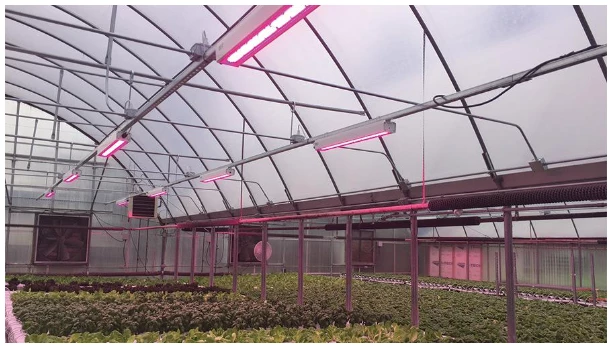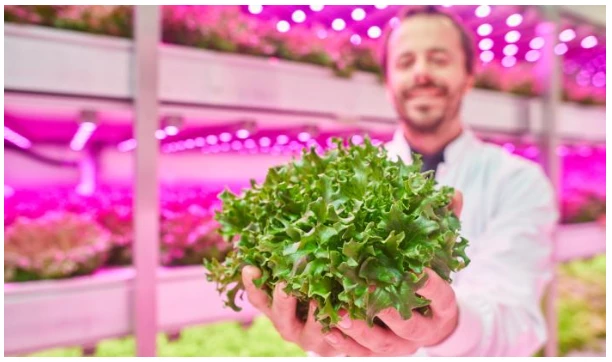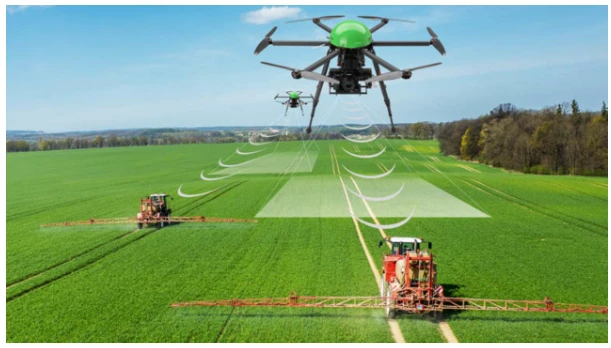
Smart farm solution ensures delivery in hi-tech agriculture
Food shortage has in recent decades emerged as a major challenge in development. Scientists have been applying smart farm solutions to help meet higher food demand. Nowadays, indoor farms, vertical farms and greenhouse farms are well-known as part of high-tech agriculture, using modern smart systems for lighting and irrigation. The application of advanced technologies should guarantee a higher output. Here we will look into more details of smart farm solution.
Smart farm solution
Smart Farm solution is a hi-tech agricultural method applying the modern technology in farming activities. The hardware using Internet of Things (IoT) and software are employed to manage and control farming, both in pre-crop, on-crop and post-crop (harvesting) stages. Smart farms also use modern systems for lighting, irrigation and fertilizing.
There, lighting systems can help stimulate the growth, flowering and fruiting of crops. The fertilizing system adds nutritious substances and irrigation systems supplies or drains water, all operated by smart farming controllers.

A lighting system is used in a greenhouse cabinet as part of the smart farm solution.
In comparison with traditional farming, smart farming shows many prominent features. In cultivation under supervision, all data of the farm is collected to a digital platform. The early detection and application of inputs and applied automation help save cost as well as labor. reliable weather forecasts and updated real-time status on the farm assist farmers in minimizing any impact and maximizing the resources.
It is proven that the use of pesticides and crop failures declined significantly in smart farms. This means the yield and quality of crops, be it vegetable, flower or fruit, increase much compared with traditional farming. By analyzing the farming data, scientists understand more the characteristics of each plant in each period of growth cycle in order to improve cultivation in the next crops.
Smart lighting in smart farm solution
It is found that red light and far-red light can stimulate the flowering and fruiting of plants, while blue light has a positive impact on the growth of stem, root and leaves. Violet can support the sweetness and flavor of fruits, and the full spectrum can help overall development of plants in their whole life.
Lighting manufacturers have therefore created the smart lighting system to improve crops, which can be installed and flexibly replaced on the rack of indoor farms or on the cabinet of greenhouse farms.
These smart lighting systems also can change the spectrum for fitting each type of plant and each period of growth. They can be combined together and controlled by a smart controller. Thanks to that, farmers can supervise the real-time status of the farm. These smart systems can be connected with the pump, air purifier, conditioner, etc. to coordinate the optimal solutions for the farm.

A researcher shows lettuce grown in a vertical smart farm.
Philips has been considered to be the leader in modern horticulture. The company has developed a variety of smart farm solutions for vertical farms, indoor farms and greenhouse farms. In their solutions, lighting is the most important factor to get the best result in crops. Tomatoes, potatoes, strawberries, lettuces, tulips, roses and so on can be now produced in the indoor farms easily with high productivity.
Modern agriculture technologies
A smart farm solution often combines several technologies to improve crop yields. Here are some of the key technologies.
Semi-automatic robots enable us to detect weeds and spray pesticides, to prevent extensive damage. They also are used in harvesting and lifting, replacing humans in heavy tasks. The automatic vehicles can be remotely controlled and navigated via phone screens and tracked by GPS system. Modern farming has become easier than ever.
Drones are used to supervise the real-time status of the farms by imaging, mapping and surveying. Thanks to remote-drones, insights can be collected regarding crop health, irrigation, spraying, soil and humidity, etc. A major plus is the drones can work in the harsh weather for humans.

A drone and heavy farming vehicles are controlled remotely
IoT-based remote sensora can control, monitor the farm conditions, and analyze the data, then make decisions. IoT devices can connect every smart electronic member in the system, combine them, and transmit information instantly. For example, the sensors can collect the data of moisture in soil, then the auto-irrigation device can supply the amount of water after analyzing the data.
If we can gather the data of thousands of farms, we will gain better knowledge of their natural condition, and find the optimal farming solutions.
Computer imaging involves the use of fixed sensor cameras and mobile cameras on drones. The images captured by them must undergo digital processing to derive the insights so that the IoT home center can acknowledge the status of the farm via the information on the images.
Should you have any questions or request a quotation of Rang Dong products, please send us an email to: export@rangdong.com.vn.
Websites: en.rangdong.com.vn and vacuumflask.rangdong.com.vn


